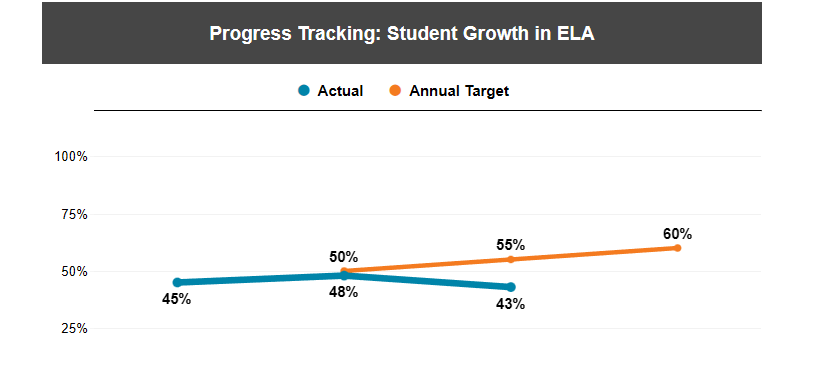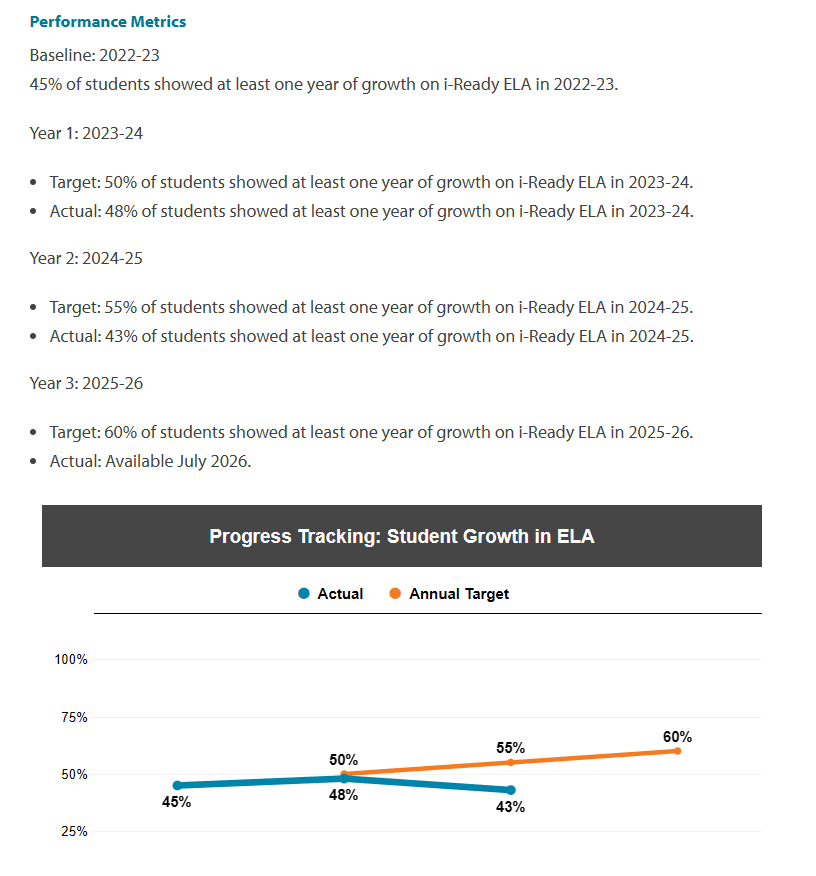
By Stuart Jenner
If you missed the first installment from yesterday, read Highline's 'iReady' Data Spells Big Challenges for Literacy -Pt.1
Understanding the Districts' "Growth" Metric
The Strategic Plan Dashboard metrics show Highline did not meet its goals for growth in either of the past two years. The percent growing a full year actually was lower in the most recent year than in the previous year. These numbers are not broken out by grade, by program characteristic, or student demographics.

Some Challenges in Assessing iReady Data
I want to be up front that writing about this data is challenging. There are nine grades, multiple years, and most grades will have students reading at a wide range of levels. The higher the grade, the more possible grade levels people could be reading at. For example, there are students in ninth grade who are testing at K through 8, at 10th and above, and then at three different levels of ninth (Early, Mid, and Late). The Mid and Late groups are defined as “Mid or Above Grade Level”, where Early is defined as Early On Grade Level. My first thought was “well that means their reading at the grade level for their year” but that’s not how iReady defines it.
Why Not Create One Number for the Entire District?
The district does this with their growth metric, but I think there are some problems with saying “this percent is at grade level.” First, some grades matter a lot more than others. Students who are reading below grade level in the early years have time to catch up. Older students do not. Second, as mentioned, many more students are taking the tests in the spring than in the fall. Third, we are overloaded with numbers. If there was one number I’d choose, it is the percent reading two or more years below grade level. But even this would mask the extreme disparities. Being five years below is a lot worse than being two years behind.
What are some positives about iReady? What are some cautions?
Parents do get the iReady information. However, they may need to ask to get information about what the scores mean. For example, they may get a number, but are not told the grade level associated with that number. Some positives of iReady:
- The test is given three times a year
- Results are available very soon after the test
- iReady correlates to the SBA, used by the state, giving an early indication of what students need to work on. The SBA numbers are what readers see on the state report card at the Highline district and school level as well as for the entire state.
Some cautions about iReady:
- There is no way to compare iReady scores to other schools in the state. This is a major difference from the SBA, where we can look at the data portal and see how one school compares to another.
- It is only one metric. Since it is easy and available, we may skip looking at other test results that give additional insights. Several teachers I talked with from Highline and also from Kent (another iReady customer) cautioned with statements I’ll paraphrase: “iReady data is one metric, sometimes it is helpful, sometimes not, use with care, look at other metrics.”
- We have to use iReady definitions of “grade level,” but we can’t review the questions students were asked.
- Some parents said the information they get from the score reports was hard to understand. They got a raw number, but no matching of the number to a grade level. The descriptions of categories were not at all intuitive.
Background: Getting the Data
To obtain the iReady data, I filed a public records request with several names of school district employees and directors. In addition to the data, I also wanted to see whether there was any discussion behind the scenes, any digging into the data and asking questions. The answer to this is “rarely.” I found a few school board members who did ask questions, but the responses they received were not very helpful. It is always hard to tell if I phrased my records request in the way that would lead to full discovery so I am hesitant to draw broad conclusions. Maybe others were asking questions, but did not show up in my request. There were some board meetings in spring 2024 and 2025 where some of the data was discussed, but I did not find communications about those in the records results. . The public records people from Highline are great, very helpful, but have major challenges because they rely on other people to do the actual research of emails.
Bottom line is there could be more analysis available than what I obtained.